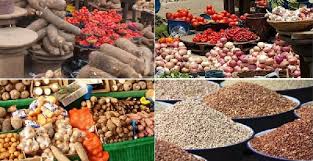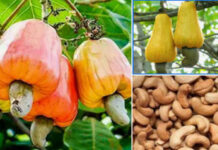Food inflation could continue to rise in the region, especially if ‘inflation expectations become de-anchored’.
Rising crude oil prices and weather conditions are among the factors driving food inflation in sub-Saharan Africa.
Food accounts for up to 40% of the consumption basket in sub-Saharan Africa.
The International Monetary Fund (IMF) recently published a report detailing food inflation trends in sub-Saharan Africa.
According to findings by the multilateral lender, food prices are increasingly driving inflation across the region and the situation is proving to be ‘hopeless’.
As you may well know, food items make up around 40% of the consumption basket in sub-Saharan Africa. This explains why high food prices directly impact inflation rates in the region.
Using available data obtained from some countries in SSA, the IMF found that between 2019 and late 2021, there was a significant increase in inflation-linked directly to higher food prices.
“Food inflation increased throughout 2019, on average, across 20 countries in the region where monthly food price data are available. After remaining stable around 9 percent (year over year) since the beginning of the pandemic, food inflation started to rise again from April this year to some 11 percent in October. The chart below shows how food inflation is outpacing and contributing to the pick-up in overall consumer price inflation in sub-Saharan Africa, which rose to about 9 percent in October, up from around 6 percent in 2019,” said a part of the report which was seen by Business Insider Africa.
Meanwhile, the IMF also identified some of the factors driving food inflation to include the following:
o Rising oil prices which raise fertiliser and transportation costs.
o Weather conditions such as drought which is a serious problem in some African countries.
o Export restrictions imposed by some major food exporters; stockpiling.
o The pandemic disrupted seed production and caused labour shortages.
o The report also found that certain domestic factors such as weather and exchange rates contribute to food inflation in the region.
In terms of outlook, the IMF expressed uncertainty. Apparently, there is a possibility that food inflation could moderate if the pandemic-induced global supply chain disruptions are resolved and commodity prices ease up. Otherwise, food inflation could continue to rise, especially if ‘inflation expectations become de-anchored’.
The report concluded by noting that high food inflation could potentially worsen the food insecurity already being faced by most countries in sub-Saharan Africa. And as always, this will disproportionately affect the poorest of the poor in these countries. The IMF also recommended a number of solutions towards addressing the problem, including social assistance, access to finance for farmers, dismantling trade barriers, provision of improved seeds, insecticides, and fertilisers, etc.








